Key takeaways
- Documentary filmmaking requires building trust with subjects, balancing authenticity with storytelling while maintaining ethical responsibility.
- “20 Days in Mariupol” exemplifies the power of a concentrated timeline, facilitating deep emotional connections between viewers and the depicted realities of war.
- Cinéma vérité techniques and careful editing choices enhance the emotional impact and authenticity of documentary storytelling.
- Filmmakers must navigate the delicate balance between witnessing and respecting their subjects’ experiences, emphasizing the importance of presence and empathy in the documentary process.
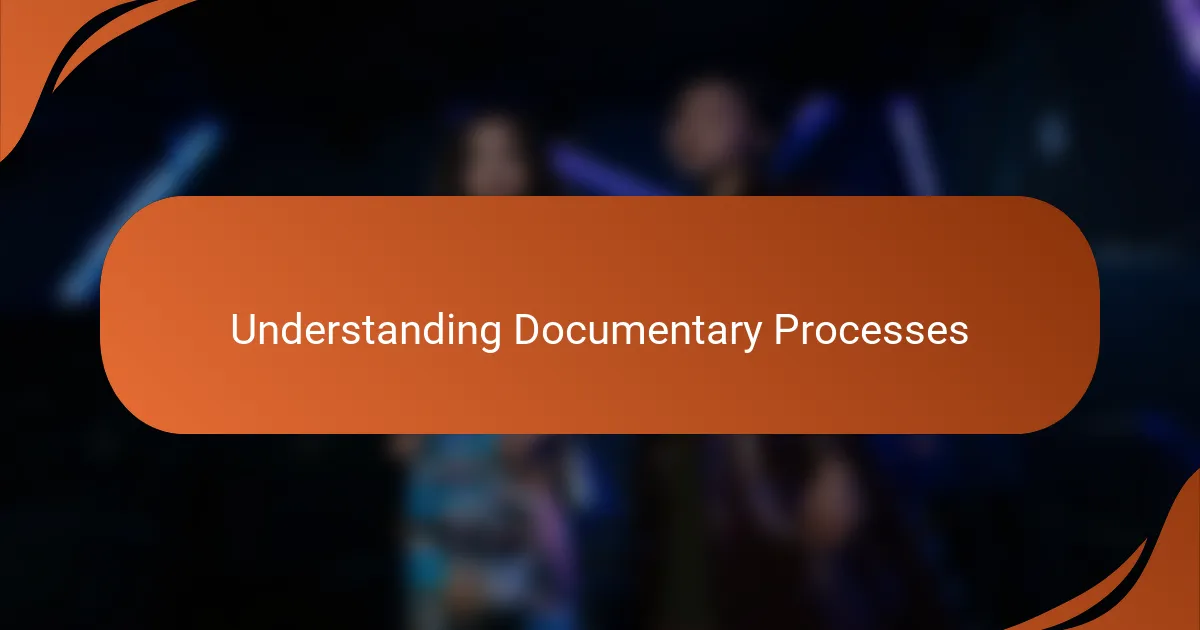
Understanding Documentary Processes
Documentary filmmaking is a unique art form that blends storytelling with reality. From my experience, capturing truth requires patience and an eye for moments that reveal deeper human emotions. Have you ever considered how much unseen effort goes into building trust with subjects before the camera even starts rolling?
In “20 Days in Mariupol,” this process is evident through the raw and unfiltered glimpses into lives disrupted by conflict. I found myself reflecting on the ethical responsibility filmmakers carry—how do they balance being observers without interfering, yet still telling a compelling narrative? It’s a delicate dance between authenticity and storytelling craft.
Moreover, the editing room becomes a second battlefield where countless hours are spent shaping the story. I’ve learned that what ends up on screen is just the tip of the iceberg; the real challenge is deciding what to leave out to maintain emotional impact without compromising factual integrity. This selective process shapes how audiences ultimately connect with the film’s message.
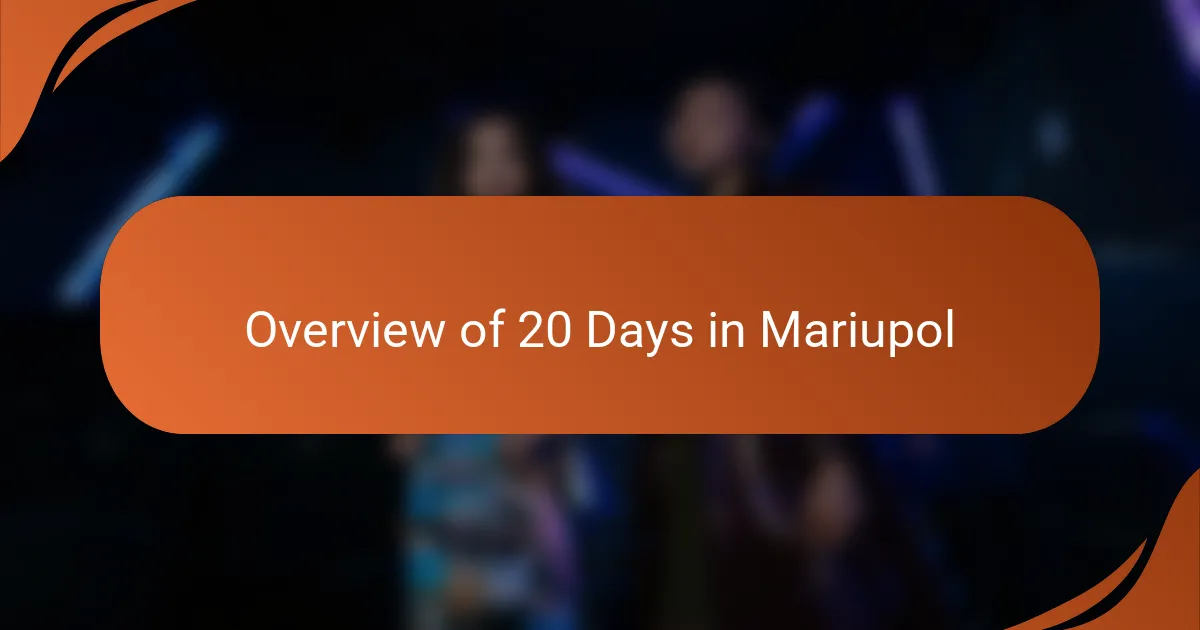
Overview of 20 Days in Mariupol
“20 Days in Mariupol” offers an intense, ground-level perspective of a city caught in the throes of war. Watching it, I was struck by how the film doesn’t just document events but immerses you in the everyday struggles and resilience of the people living through unimaginable circumstances.
What really stayed with me was the film’s commitment to showing the raw and unvarnished reality without sensationalism. It made me wonder: how do filmmakers maintain such honesty while dealing with subjects who are enduring trauma? The answer seems to lie in their patient and empathetic approach, which the documentary captures beautifully.
The choice to focus tightly on just 20 days creates a sense of immediacy and intimacy that’s both gripping and heartbreaking. From my experience, this concentrated timeline allows viewers to connect deeply with the unfolding human stories, making the impact much more personal and profound.

Documentary Techniques in 20 Days in Mariupol
The filmmakers’ choice to use cinéma vérité techniques in “20 Days in Mariupol” struck me deeply. This style, which emphasizes naturalistic, handheld camera work, really pulled me into the chaos and emotional rawness of the city’s reality. Have you ever felt like you were right there in the moment, breathing the same air? That’s the power of intimate, unpolished footage—it makes the documentary feel less like a film and more like a witness.
Another technique that resonated with me was the use of close-up shots capturing raw emotions—fear, hope, exhaustion—that words often fail to express. In my experience, these moments are the heartbeat of any compelling documentary; they invite viewers into the private vulnerability of the subjects. It made me question how much trust the filmmakers must have earned to capture such unguarded expressions without intrusion.
The editing pace also plays a crucial role. I noticed how scenes sometimes linger, allowing the weight of what’s happening to settle in, while other moments snap quickly, mirroring the unpredictability of life in a war zone. This ebb and flow kept me engaged but also emotionally unsettled—exactly what the story demanded. Isn’t it fascinating how editing can subtly manipulate your emotional journey through a film?
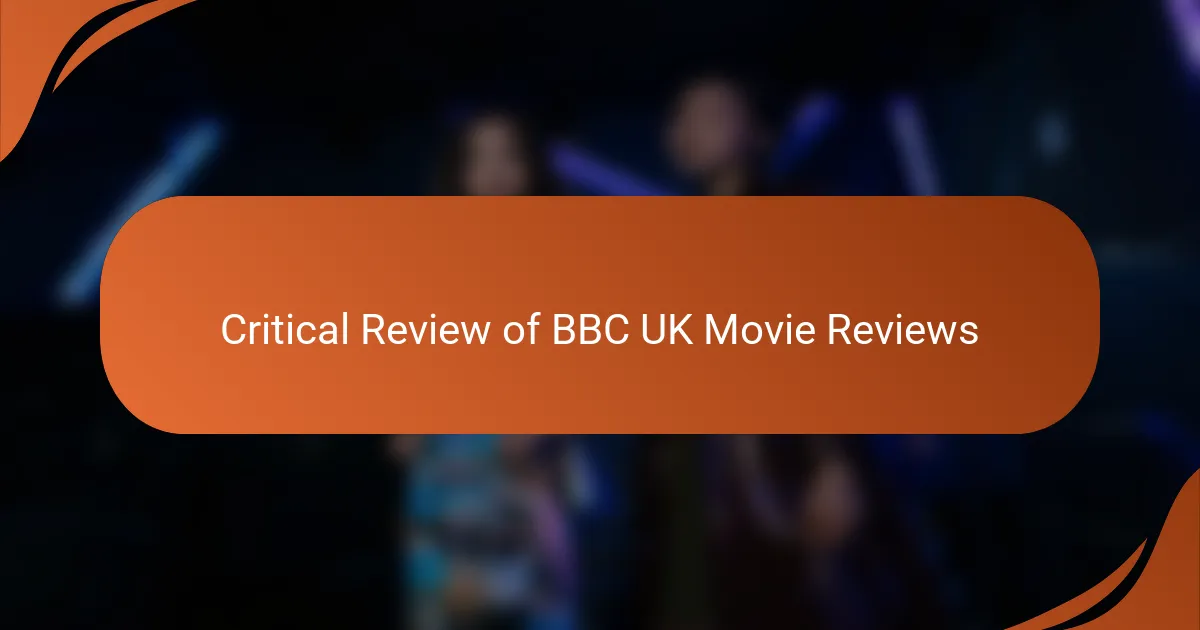
Critical Review of BBC UK Movie Reviews
When reading BBC UK movie reviews, I often find their approach impressively thorough but occasionally too clinical for a documentary as visceral as “20 Days in Mariupol.” They dissect technical elements well, yet sometimes miss the emotional undercurrent that, to me, is what truly drives the viewer’s connection. Have you noticed how some reviews focus heavily on structure but overlook the raw human experience that documentaries capture?
What struck me about BBC’s critiques is their balance between praise and constructive criticism—they don’t shy away from highlighting where the filmmaking choices might detract from the narrative flow. From my perspective, this honesty is valuable, though I sometimes wish they would lean more into the ethical complexities raised by such sensitive content. How do you think a reviewer should weigh technical skill against emotional impact in documentary films?
Still, the reviews serve an important purpose by providing context and inviting deeper reflection. I remember reading one BBC review that made me reconsider the role of the filmmaker not just as a storyteller, but as a witness to history. That reflection itself added layers to my understanding, showing me how critical reviews can extend beyond judgment and become part of the documentary’s ongoing conversation.
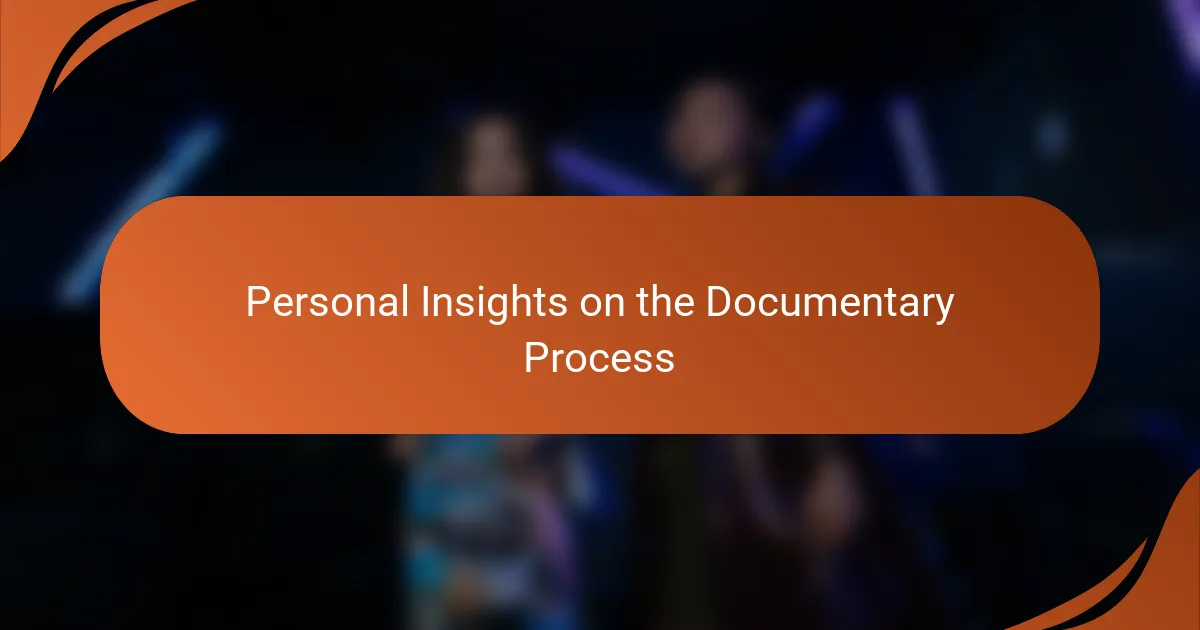
Personal Insights on the Documentary Process
What really struck me about the documentary process in “20 Days in Mariupol” is the filmmakers’ commitment to patience. From my experience, getting close enough to capture raw, unguarded moments without disrupting lives requires immense sensitivity. Have you ever wondered how much vulnerability someone needs to share before they truly open up on camera?
I was also reminded of the emotional toll this process can take on those behind the lens. Documenting human suffering day after day isn’t just a technical challenge—it’s a deeply personal one. Personally, I’ve found that filmmakers must develop a form of resilience to stay present without becoming overwhelmed, which adds a complex layer to their role as both observers and storytellers.
Lastly, the ethical considerations kept coming to my mind. How do filmmakers decide when to intervene, if at all? In my view, balancing empathy with detachment is an ongoing negotiation, and it’s evident in how “20 Days in Mariupol” respects its subjects while revealing their realities. This delicate balance is what, to me, defines the integrity of a documentary.

Lessons from 20 Days in Mariupol
One lesson that stood out to me from “20 Days in Mariupol” is the sheer power of presence. Being there, even behind the camera, means witnessing pain and resilience in equal measure. I often find myself asking how one stays emotionally grounded while filming such raw human experiences—something the filmmakers manage with remarkable grace.
Another important takeaway is the significance of time in storytelling. Twenty days may seem brief, yet the documentary proves how a compressed window can reveal the intensity and complexity of a city under siege. It made me reflect on my own experience with shorter projects and how focusing sharply on a small slice of life can actually deepen the emotional impact.
Lastly, the film drove home the lesson that respect is a quiet but essential force in documentary work. Watching “20 Days in Mariupol,” I felt the filmmakers’ careful balance between bearing witness and protecting their subjects’ dignity. Have you ever considered how much trust this requires—and how that trust shapes the entire film? From what I’ve seen, that ethical foundation is what transforms footage into a meaningful story.
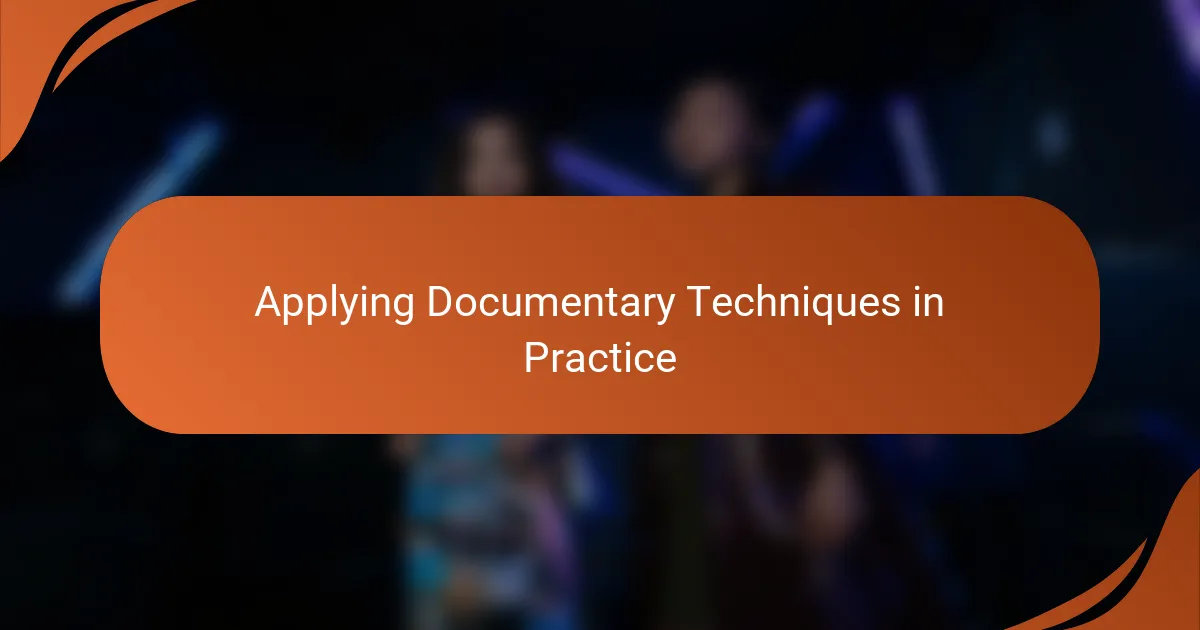
Applying Documentary Techniques in Practice
Applying documentary techniques in practice often demands more than just technical skill—it requires an ongoing sensitivity to the unfolding reality. In my experience, the choice of camera angles or lighting can’t simply serve aesthetics; they must honor the subjects’ truth without imposing an external narrative. Have you ever paused mid-shoot, questioning if your presence was altering the moment you intended to capture?
One technique I found particularly impactful in “20 Days in Mariupol” was the seamless integration of observational footage with moments of empathetic proximity. For me, this balance is a constant challenge—how close to get without crossing into intrusion? The filmmakers’ ability to navigate this boundary reminded me that documentary practice is as much about listening and waiting as it is about filming.
Editing, too, is where theory meets real-world judgment calls. I recall feeling torn over which scenes to include because each carried emotional weight, but overloading the narrative would risk diluting the story’s impact. How do you decide when to let a powerful, yet difficult, moment linger versus when to move on? This is a question I often wrestle with, and seeing it handled so thoughtfully in “20 Days in Mariupol” reinforced for me how crucial editing choices are to shaping authentic engagement.